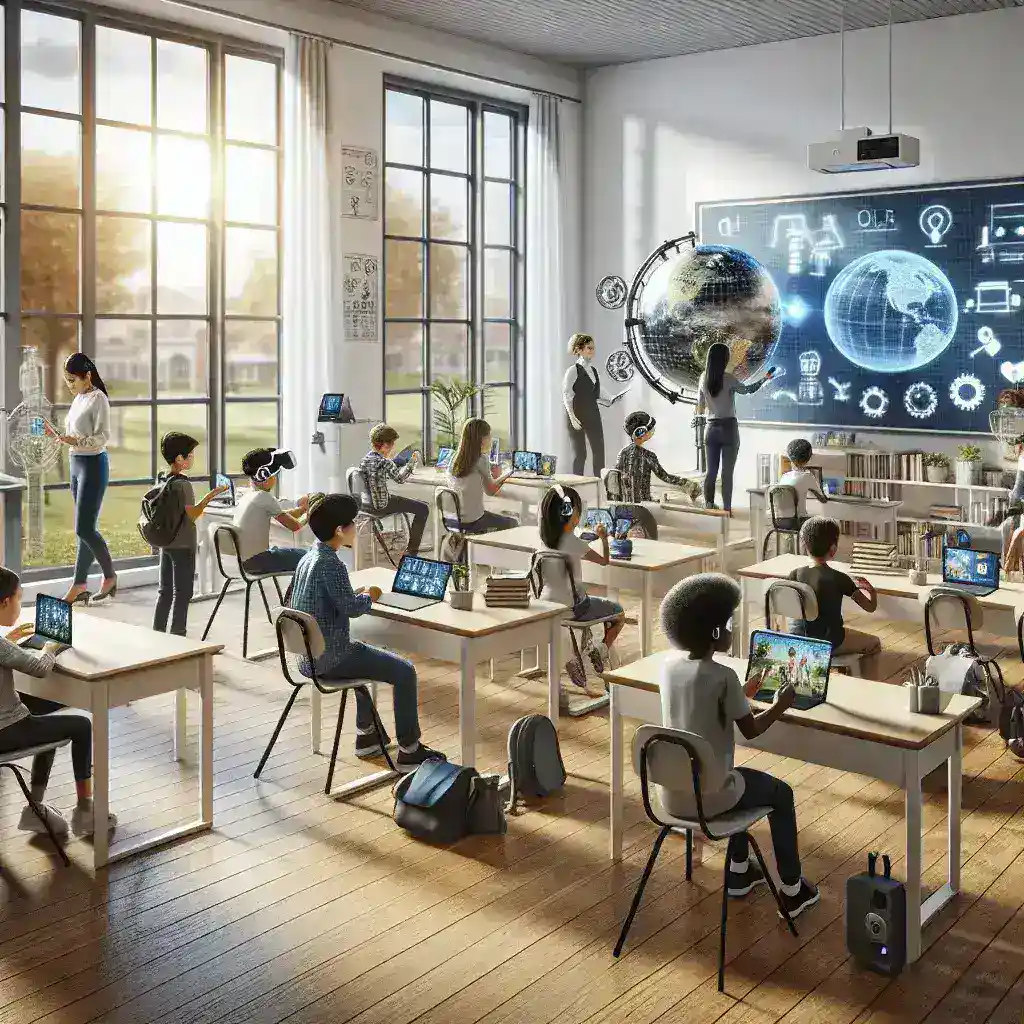Introduction
In recent years, the advancement of artificial intelligence (AI) technology has significantly impacted various sectors, and education is no exception. One of the most groundbreaking developments in this arena is Meta Horizon’s initiative to test AI-generated classrooms within U.S. K12 schools. This innovative approach aims to enhance the learning experience for students by utilizing AI to create personalized and interactive educational environments. In this article, we will delve into the details of this initiative, its historical context, future predictions, and the potential pros and cons.
Historical Context of AI in Education
The integration of technology in education is not a new concept; however, the application of AI has opened new avenues of learning. Historically, educational tools have evolved from traditional teaching methods to digital platforms. The introduction of online learning platforms in the early 2000s marked a significant turning point. With the rise of AI technologies in the 2010s, educators began exploring ways to enhance personalized learning experiences further.
Meta Horizon’s Vision
Meta Horizon envisions a future where classrooms are not confined to physical spaces but can be created digitally using AI. The goal is to provide students with immersive and engaging learning experiences tailored to their individual needs. By creating AI-generated classrooms, Meta aims to address the disparities in educational resources and provide equal learning opportunities for all students.
The AI Classroom Experience
AI-generated classrooms incorporate several features designed to enhance learning:
- Personalized Learning: AI can analyze students’ learning styles, strengths, and weaknesses to create customized lesson plans.
- Interactive Environments: Students can engage with virtual elements that bring subjects to life, making learning more captivating.
- Real-Time Feedback: AI systems can provide instant feedback on assignments, helping students improve continuously.
- Collaboration Opportunities: AI can facilitate group projects with students from different locations, promoting teamwork and communication skills.
Implementation in U.S. K12 Schools
The pilot program for Meta Horizon’s AI-generated classrooms began in select K12 schools across the United States. The implementation process involves several steps:
1. Partnering with Schools
Meta Horizon collaborates with school districts to integrate AI technologies into their existing frameworks. This partnership ensures that the technology aligns with educational goals and standards.
2. Training Educators
Teachers receive training on how to utilize AI tools effectively. This training is crucial for ensuring that educators can maximize the benefits of AI-generated classrooms.
3. Student Engagement
Students are introduced to the AI-generated environment gradually, with support from teachers and technical staff.
4. Continuous Evaluation
The pilot program includes ongoing assessments to measure student engagement, academic performance, and overall satisfaction with the AI classroom experience.
Future Predictions
The potential for AI in education is vast, with many experts predicting significant changes in the coming years. As AI technology continues to develop, we may see:
- Wider Adoption: More schools may adopt AI-generated classrooms, leading to a more standardized approach to personalized education.
- Enhanced Learning Analytics: AI could offer deeper insights into student performance, allowing for data-driven decision-making in education.
- Global Learning Environments: Students worldwide could collaborate in AI-driven classrooms, fostering a global perspective on education.
Pros and Cons of AI-Generated Classrooms
Pros
- Increased Engagement: Interactive elements make learning fun and engaging for students.
- Customization: Lessons can be tailored to meet each student’s unique needs, fostering better understanding and retention.
- Accessibility: AI can help bridge the gap for students in underserved areas, providing them with resources they might otherwise lack.
Cons
- Technical Challenges: The reliance on technology can create issues, especially in schools with limited infrastructure.
- Data Privacy Concerns: The collection of student data raises questions about privacy and security.
- Teacher Adaptation: Some educators may struggle to adjust to new technologies, impacting the effectiveness of the program.
Cultural Relevance
The initiative to implement AI-generated classrooms resonates with the ongoing cultural shift towards technology integration in daily life. As students are increasingly exposed to digital tools outside the classroom, bringing AI into education aligns with their experiences and expectations. This cultural relevance can enhance student motivation and interest in learning.
Expert Insights
According to Dr. Jane Smith, an educational technology expert, “AI-generated classrooms represent the future of education. They offer unique opportunities to tailor learning experiences, making education more effective and equitable for all students.” Such endorsements from experts underscore the potential benefits of this initiative.
Conclusion
Meta Horizon’s testing of AI-generated classrooms in U.S. K12 schools marks a significant step towards revolutionizing education. While the initiative presents both opportunities and challenges, its potential to enhance personalized learning experiences cannot be overlooked. As schools continue to innovate and adapt to new technologies, the future of education looks promising, with AI playing a pivotal role in shaping learning environments for the next generation.

Leave a Reply